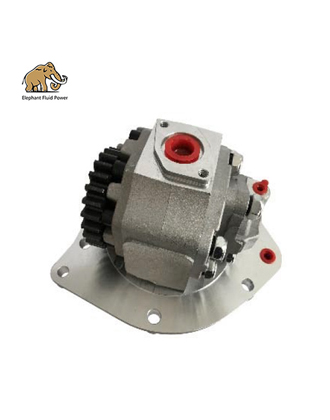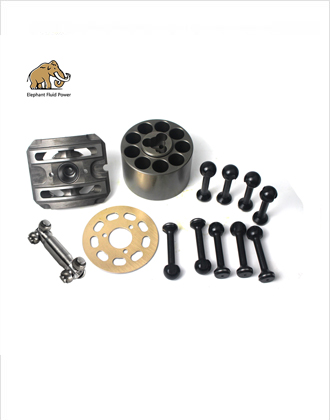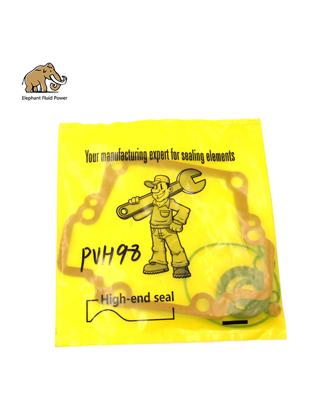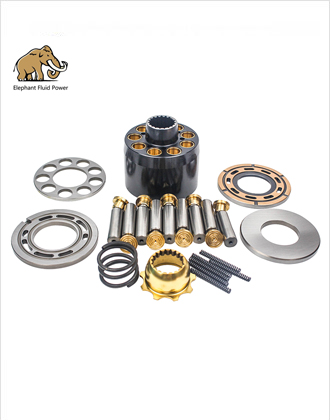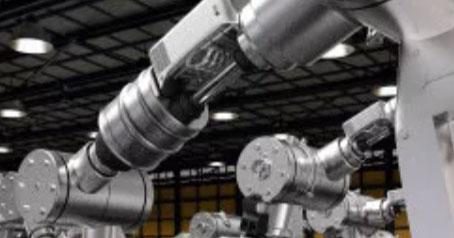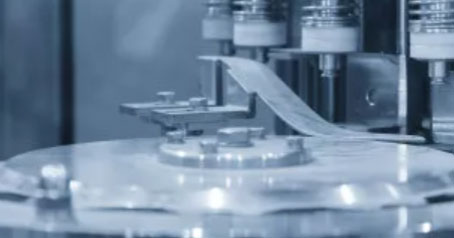Excavator main pump refers to the main hydraulic pump of an excavator. It is a crucial component of the excavator's hydraulic system, which converts the mechanical energy of the engine into hydraulic energy. The following is a detailed introduction:
First, Function:
The main pump draws hydraulic oil from the hydraulic oil tank and delivers it as pressure oil to various hydraulic actuators of the excavator, such as the boom cylinder, arm cylinder, bucket cylinder, and swing motor, to provide power for the movement of the working device.
Second, Working Principle:
1. Piston pump principle
Suction stroke: As the piston moves downward in the cylinder, the volume of the working chamber increases, creating a vacuum. This causes hydraulic oil to be sucked into the working chamber through the suction valve from the hydraulic oil tank.
Discharge stroke: When the piston moves upward, the volume of the working chamber decreases, which increases the pressure of the hydraulic oil. The high - pressure oil is then forced out of the working chamber through the discharge valve and into the hydraulic system's pipeline to supply power to various components.
2. Control mechanism
Flow control: The excavator's main pump is usually a variable - displacement pump. The swash plate or wobble plate inside the pump can change the angle. A larger angle means a larger displacement per rotation of the pump, increasing the flow of hydraulic oil. When the operator moves the control lever, the control system adjusts the angle of the swash plate or wobble plate according to the movement of the lever, thereby changing the output flow of the pump to meet the requirements of different working speeds.
Pressure control: The main pump also has a pressure - limiting mechanism. When the pressure in the hydraulic system exceeds the set value, the pressure - limiting valve opens, and part of the hydraulic oil returns to the oil tank, which limits the maximum pressure of the system to protect the components of the hydraulic system from being damaged by excessive pressure. In addition, through the load - sensing system, the pump can automatically adjust the output pressure according to the load of the actuator, so that the system can work efficiently under different load conditions.
Third, Common Types:
There are mainly gear pumps, piston pumps, and vane pumps. Gear pumps are simple in structure and low - cost, but have lower pressure and flow accuracy. Piston pumps can achieve high - pressure and large - flow output, with high efficiency and good control performance, and are widely used in medium and large - sized excavators. Vane pumps have stable operation and low noise, but are less adaptable to high - pressure environments.
Fourth, Maintenance Considerations: Regular maintenance is required to ensure its optimal performance. It is necessary to prevent the entry of impurities to avoid wear and blockage of components, check for oil leakage, and monitor the oil temperature to prevent overheating. In addition, regular replacement of hydraulic oil and oil filters is also an important measure to ensure the normal operation of the excavator main pump.
Used hydraulic pumps for excavators
Excavator hydraulic pump
 French
French
 Portuguese
Portuguese
 Russian
Russian
 German
German
 Spanish
Spanish
 Japanese
Japanese
 Korean
Korean
 Irish
Irish
 Greek
Greek
 Turkish
Turkish
 Italian
Italian
 Danish
Danish
 Romanian
Romanian
 Indonesian
Indonesian
 Czech
Czech
 Afrikaans
Afrikaans
 Swedish
Swedish
 Polish
Polish
 Basque
Basque
 Catalan
Catalan
 Esperanto
Esperanto
 Hindi
Hindi
 Lao
Lao
 Albanian
Albanian
 Amharic
Amharic
 Armenian
Armenian
 Azerbaijani
Azerbaijani
 Belarusian
Belarusian
 Bengali
Bengali
 Bosnian
Bosnian
 Bulgarian
Bulgarian
 Cebuano
Cebuano
 Chichewa
Chichewa
 Corsican
Corsican
 Croatian
Croatian
 Dutch
Dutch
 Estonian
Estonian
 Filipino
Filipino
 Finnish
Finnish
 Frisian
Frisian
 Galician
Galician
 Georgian
Georgian
 Gujarati
Gujarati
 Haitian
Haitian
 Hausa
Hausa
 Hawaiian
Hawaiian
 Hebrew
Hebrew
 Hmong
Hmong
 Hungarian
Hungarian
 Icelandic
Icelandic
 Igbo
Igbo
 Javanese
Javanese
 Kannada
Kannada
 Kazakh
Kazakh
 Khmer
Khmer
 Kurdish
Kurdish
 Kyrgyz
Kyrgyz
 Latin
Latin
 Latvian
Latvian
 Lithuanian
Lithuanian
 Luxembourg
Luxembourg
 Macedoniar
Macedoniar
 Malagasy
Malagasy
 Malay
Malay
 Malayalam
Malayalam
 Maltese
Maltese
 Maori
Maori
 Marathi
Marathi
 Mongolian
Mongolian
 Burmese
Burmese
 Nepali
Nepali
 Norwegian
Norwegian
 Pashto
Pashto
 Persian
Persian
 Punjabi
Punjabi
 Serbian
Serbian
 Sesotho
Sesotho
 Sinhala
Sinhala
 Slovak
Slovak
 Slovenian
Slovenian
 Somali
Somali
 Samoan
Samoan
 Scots Gaelic
Scots Gaelic
 Shona
Shona
 Sindhi
Sindhi
 Sundanese
Sundanese
 Swahili
Swahili
 Tajik
Tajik
 Tamil
Tamil
 Telugu
Telugu
 Thai
Thai
 Ukrainian
Ukrainian
 Urdu
Urdu
 Uzbek
Uzbek
 Vietnamese
Vietnamese
 Welsh
Welsh
 Xhosa
Xhosa
 Yiddish
Yiddish
 Yoruba
Yoruba
 Zulu
Zulu

